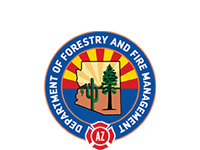Community Wildfire Protection Planning
Destructive wildland fires in 2002 were a catalyst for Congress to pass the Healthy Forests Restoration Act (HFRA) in 2003.
The intent of the HFRA was to provide funding and guidance for better forest management practices throughout wildland areas and the wildland urban interface.
One of the key outcomes of the HFRA was to incentivize communities to create a Community Wildfire Protection Plan, simply known as a CWPP.
An approved CWPP can influence and prioritize future funding for hazardous fuel reduction projects, including where and how federal agencies implement fuel reduction projects on federal lands.
More information on CWPPs can be found on the national Forests and Rangelands website.
Three Basic Criteria for CWPPs
- Collaboration: A CWPP must be collaboratively developed by local and state government representatives, in consultation with federal agencies and other interested parties.
- Prioritized Fuel Reduction: A CWPP must identify and prioritize areas for hazardous fuel reduction treatments and recommend the types and methods of treatment that will protect one or more at-risk communities and essential infrastructure.
- Treatment of Structural Ignitability: A CWPP must recommend measures that homeowners and communities can take to reduce the ignitability of structures throughout the area addressed by the plan.
CWPP Guidance Requirements - Updated 2024
*A more detailed template is available upon request
Every year, the Arizona Department of Forestry and Fire Management analyzes communities across the state to determine which ones are at risk for a catastrophic wildfire. To see the list of communities at risk, please visit our Arizona At Risk Community page.
However, through programs, such as Firewise USA, we work with communities, HOAs, and municipalities to evaluate their risk factors, and if necessary, take the imperative steps of working to reduce the chances of devastating wildfires burning through their communities.
We also provide grant funding to help communities pay for fuels mitigation work in their area. The Department of Forestry and Fire Management also develops and implements project work across the state to reduce hazardous fuels and maintain the health of our forests.
For additional information on the CWPP processes or procedures email CWPP Program Coordinator Karl Gehrke: [email protected].


